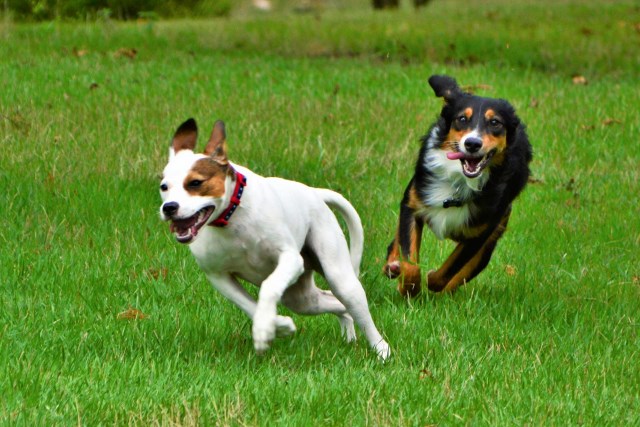
The Best Calming Techniques for High-Energy Dogs
Does your dog seem like they’re always “on”? Zoomies at 9 p.m., endless barking at squirrels, or constant pacing by the door? If so, you may be living with a high-energy dog—and while their enthusiasm is lovable, it can also be a lot to handle.
The good news? There are effective, pet-safe ways to help your dog settle down. Whether you have a young pup or an excitable adult dog, these calming techniques can make a world of difference—for both of you.
Why Are Some Dogs So High-Energy?
Certain breeds (like Border Collies, Huskies, and Jack Russell Terriers) were bred to work hard all day, so they naturally need more stimulation. Other dogs may be high-energy due to:
- Lack of regular exercise
- Boredom or under-stimulation
- Anxiety or environmental stress
- Young age or being under-trained
Whatever the cause, calming your dog is about balancing their physical, mental, and emotional needs.
1. Daily Exercise is Non-Negotiable
The number one way to calm a high-energy dog? Burn off that excess energy.
Try:
- Long walks (not just around the block!)
- Running, hiking, or fetch
- Tug-of-war or chasing toys
- Doggy playdates or dog park visits
Tip: A tired dog is a calm dog. Aim for at least 30–60 minutes of physical activity each day, depending on breed and age.
2. Mental Stimulation = A Tired Brain
High-energy dogs aren’t just physically active—they’re smart and easily bored. Engage their minds with:
- Puzzle feeders or treat-dispensing toys
- Training sessions (tricks, obedience, agility)
- Sniff walks (let them explore with their nose!)
- Frozen KONG toys or lick mats
Mental stimulation can wear your dog out just as much as a walk.
3. Create a Calming Environment
Help your dog relax at home with:
- A designated quiet space or crate (with blankets and favorite toys)
- Soothing background music or calming dog playlists
- Lavender or chamomile aromatherapy sprays (dog-safe only!)
- Low lighting and reduced household noise
Routine and predictability also help reduce anxiety in excitable dogs.
4. Try Calming Aids (Safely)
For dogs that need a little extra help:
- Calming chews with ingredients like L-theanine, melatonin, or chamomile
- Thundershirts (anxiety wraps that apply gentle pressure)
- CBD for dogs (always talk to your vet first!)
- Pheromone diffusers like Adaptil
Always consult your veterinarian before introducing any supplement or calming product.
5. Practice Calm Behavior Daily
Reward calmness, not just excitement.
- Ignore jumping or wild behavior
- Reward relaxed postures with treats or praise
- Practice “settle” or “place” training with positive reinforcement
- Use downtime for snuggles or brushing (if your dog enjoys it)
Consistency is key—your dog will learn that calm = attention and rewards.
Bonus Tip: Avoid These Mistakes
- Don’t unintentionally reward hyperactivity with attention
- Avoid over-stimulating environments if your dog is already hyped
- Skipping exercise and enrichment can make things worse
Photo by Elliot Bryan on Unsplash
